Police had a plan to help reduce Aboriginal incarceration. Then this happened ...
The prison numbers are going in the wrong direction. But NSW Police warns it should not be held accountable for helping to bring them down.
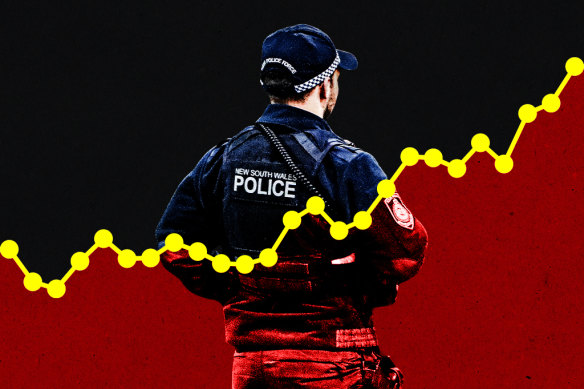
The independent watchdog for NSW Police says the force can do more to stop high numbers of Aboriginal people ending up in jail.Credit: Marija Ercegovac
In 2018, NSW Police launched its five-year “blueprint” for improving its relationship with Aboriginal communities.
One of the main goals was to work with other parts of government to stop so many Aboriginal people from ending up in the criminal justice system.
Then this happened:
The above graph shows the number of Aboriginal people in jail who have been refused bail but not sentenced, also known as the remand population. It’s up 47 per cent over five years.
Over that same period, the number of non-Aboriginal people on remand stayed pretty flat – up just 2 per cent.
Another main goal of the police’s Aboriginal Strategic Direction 2018–23 was to help young Aboriginal people by improving their safety and wellbeing.
Here are the remand numbers for those aged 10–17, which rose 26 per cent.
And for young people who aren’t Aboriginal? Their numbers went down 41 per cent.
Over time, the number of people serving jail sentences has fallen. But the overall number of people in custody is climbing because more Aboriginal people are being charged by police and refused bail.
In other words, the problem worsened during NSW Police’s last attempt to help fix it.
“The numbers are shocking,” says Jackie Fitzgerald, executive director of the Bureau of Crime Statistics and Research.
“We’re really moving further and further away from the Closing the Gap targets [to reduce over-representation of Aboriginal people in the criminal justice system].”
The police force says it’s trying to understand what’s behind these trends and recently completed a research project, which “highlighted the complex intersection between intergenerational trauma, low socioeconomic outcomes and vulnerability to both victimisation and offending”.
“In doing so,” a NSW Police spokesperson said, “it raised the importance of a whole-of-government approach to address the underlying causes.”
But NSW Police is at odds with its independent watchdog over how much police themselves can do to combat the problem – and whether the force should be held responsible for helping to Close the Gap in the first place.
NSW Police has rejected recommendations to review its approach to bail decisions and “proactive” police procedures.
And under its latest Aboriginal Strategic Direction, it decided to reduce outside scrutiny.
Under the previous plan, the police had asked the Law Enforcement Conduct Commission (LECC) to review their progress.
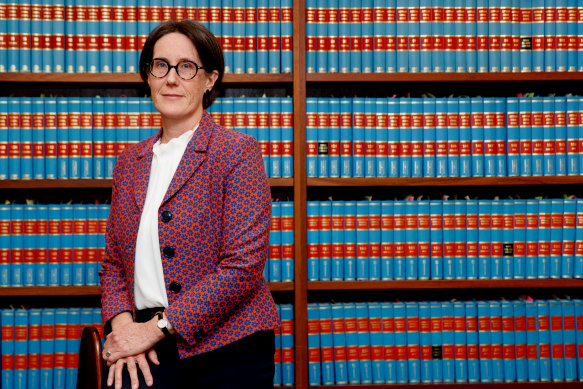
Anina Johnson, a commissioner of the Law Enforcement Conduct Commission, says police have a high level of discretion when it comes to decisions about charges and bail. Credit: Nikki Short
In findings released in October, the LECC praised the difficult work carried out by Aboriginal Community Liaison Officers within the force and noted efforts police have made to build better relationships with Aboriginal communities, especially during times of natural disasters and the pandemic.
However, the LECC found the logic of the police framework was unclear and the strategy had failed to achieve its goals.
After receiving preliminary findings, NSW Police chose not to include LECC as the monitoring body for the new 2024 Aboriginal Strategic Direction.
“In the last plan, we were effectively invited on board and invited to provide that accountability and oversight,” LECC commissioner Anina Johnson says.
“We have not been included in the plan on this occasion.”
NSW Police did not respond to questions about this decision. A spokesperson said the new policy, developed by Aboriginal staff, “addresses many of the concerns raised by the LECC report”.
‘People should be furious’
If the average prison reflected NSW society, 3 per cent of inmates would be Aboriginal, not 31 per cent.
Compared to population numbers, Aboriginal people living near CBDs are more likely to be charged and put in jail.
And while remand figures have worsened since 2018, if you look at the numbers over the past decade, the situation is even bleaker. In that time, the number of Aboriginal adults on remand is up 143 per cent.
“The people of NSW should be furious that the gap is widening under our government’s watch,” said Lauren Stefanou, a principal solicitor with the Aboriginal Legal Service NSW/ACT.
“Closing the Gap is everyone’s responsibility, and NSW Police have a critical role to play.”
Along with the rest of the states and territories and the Commonwealth government, the NSW government signed up to new Closing the Gap targets in 2020.
The agreement struck with the Coalition of Aboriginal and Torres Strait Islander Peak Organisations included Targets 10 and 11 – to reduce the over-representation of Aboriginal adults and young people in the criminal justice system.
NSW Police’s new action plan contains multiple references to the agreement.
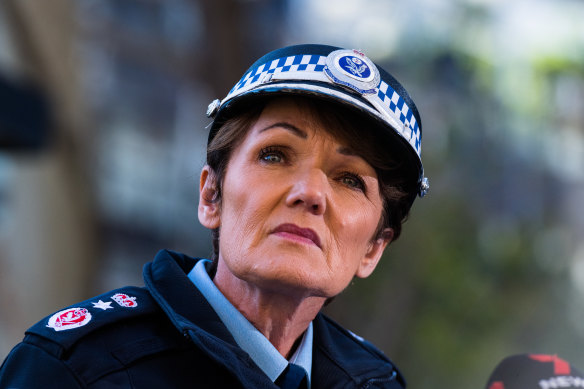
Under Commissioner Karen Webb, NSW Police opposes being held responsible under Closing the Gap targets. Credit: James Brickwood
But NSW Police Commissioner Karen Webb has warned that the force should not be held responsible for meeting targets.
“The primary role of the NSWPF is law enforcement, and suggesting NSWPF is responsible for achieving Closing the Gap outcomes 10 and 11 would lead to competing duties,” the commissioner wrote in a letter to the watchdog last year.
Webb declined to elaborate on what she meant.
Johnson, the LECC commissioner, says interactions with police are “the critical entry point for the justice system”.
“I don’t think it’s helpful to say ‘we just enforce the law’ because it’s not a uniform approach,” Johnson says. “Police have enormous discretion in the way in which they choose to enforce the law, and that, at the moment, is statistically disadvantaging Aboriginal people.”
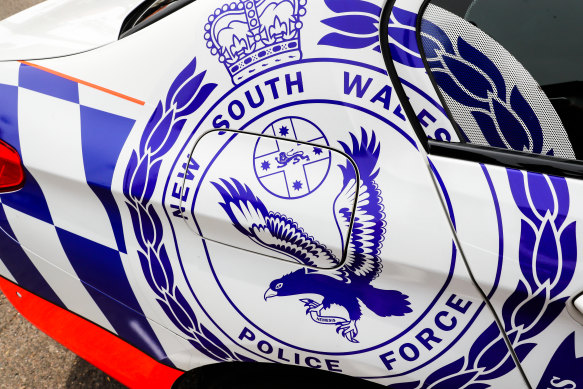
NSW Police says it cannot influence the complex social issues that lead to crime. Credit: Edwina Pickles
The watchdog wants the government to officially list NSW Police as an agency responsible for meeting targets 10 and 11.
Aboriginal Affairs Minister David Harris has said the government was working on its next Closing the Gap delivery plan, which would “capture agreed actions for and the responsibilities of NSW Police”.
The force itself says it “plays an important role” and “has made significant progress with a number of strategies and initiatives to support the targets”.
At the same time, it continues to oppose any responsibility for meeting targets.
“The NSWPF cannot influence the systemic social issues that is the predominant driver of over-representation in the criminal justice system and is reliant upon other agencies who have lead roles in this area,” police told the LECC.
“No jurisdiction in Australia has their Police Force or Service as a responsible (or accountable) agency, because of the primary responsibility it has to protect victims and community in a law enforcement role.”
In recommending police review their training and procedures, the LECC pointed to initiatives that some police commands have already taken.
At Richmond, low-level offenders no longer need to meet bail reporting conditions. And where an Aboriginal person is detained for a minor offence, a supervising officer needs to check if the person can be diverted to a service rather than charged.
“There are levers that they can pull; there are strategies that they can implement that could reduce the number of Aboriginal people being remanded in custody,” Johnson says.
NSW Police told the LECC that while it was trialling some “localised initiatives,” the Bail Act was “prescriptive.”
It said it already trained police to be “inclusive, fair and to work with Aboriginal communities to achieve better outcomes”.
“The office of constable cannot be influenced by policies based on race or other factors,” NSW Police said.
Learning from Canada
Earlier this year, a group of officers travelled to Canada to learn about that country’s approach to policing and working with First Nations people.
However, NSW Police has been criticised for not collaborating more with Aboriginal organisations.
The Aboriginal Legal Service NSW/ACT says it was not consulted on the latest police strategy, even after the government said the plan would be devised with input from Aboriginal organisations and aligned with the national Closing the Gap agreement.
‘The NSWPF cannot influence the systemic social issues that is the predominant driver of over representation in the Criminal Justice System’
NSW Police
Geoff Scott, chief executive of Just Reinvest, a not-for-profit focused on community solutions to over-representation, says he’s concerned by the police commissioner’s comment about “competing duties” and the message it sends to officers on the beat.
“It’s not about just enforcing the law,” Scott, a Wiradjuri man, says.
“It’s about the safety of the community. The police are a fundamental player in our society. If the police do a good job, it makes it a much better society.”
Scott says a change in approach at Bourke in western NSW in the previous decade helped Aboriginal people see police as part of the social safety net, not solely as strict enforcers of the law.
Under Operation Solidarity at Bourke, police and members of the Aboriginal community together made regular visits to homes where domestic violence had occurred to check what support was available to those who lived there.
The town achieved a 23 per cent reduction in domestic violence incidents between 2016 and 2017, according to a report by KPMG.
Scott says too many good programs are trialled and then never rolled out statewide.
Across NSW, domestic violence charges, including assault and stalking-intimidation, are some of the biggest contributors to the Aboriginal remand population.
“The police are in a real quandary,” says Fitzgerald, the head of the crime statistics bureau, referring to another Closing the Gap target to reduce domestic violence. “But we can’t just put all of our eggs in the criminal justice basket. We need to look at alternatives.”
Controversial program abolished
When it comes to Aboriginal children, many of those ending up in custody are not accused of violent offences.
Theft is the biggest “most serious offence” category.
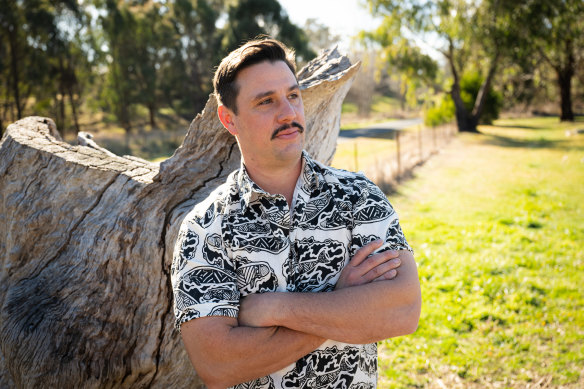
James Beaufils, a senior research fellow with the University of Technology Sydney, wants a change in philosophy from NSW Police.Credit: Monique Lovelock
“One of the big issues within that – especially in our First Nations kids getting in trouble and charged – is racial profiling, and that hasn’t improved,” says James Beaufils, a Gundungurra man and senior research fellow with the University of Technology Sydney’s law faculty.
“I think it has to be a complete restructure of the philosophy and ideas behind what [police] are doing.”
Last year, the LECC found Aboriginal young people were “grossly over-represented” in the police force’s Suspect Target Management Plan program, which created lists of “high-risk” individuals who would be policed more heavily.
In November, after police decided to no longer target children using the program and to review its use on adults, Commissioner Karen Webb told parliament police had been working on “the development of something that might replace it”.
Deputy Commissioner Dave Hudson told the same hearing, “There won’t be significant changes” and that while the old program had been misapplied, “I don’t think there was too much wrong with the policy”.

Deputy Commissioner Dave Hudson defended the now-abolished Suspect Target Management Plan policy. Credit: Dominic Lorrimer
NSW Police has since abolished the scheme entirely and a police spokesperson said it would not be replaced.
“The NSWPF will build on existing processes regarding prevention, disruption and response to address crime problems and recidivism,” the spokesperson said.
Start the day with a summary of the day’s most important and interesting stories, analysis and insights. Sign up for our Morning Edition newsletter.